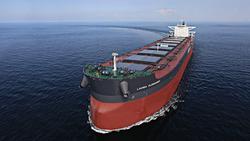Why Dry Bulk Market Needs to Be Cautious

IMF's GDP growth figures paint a rosy picture for the dry bulk market until 2019 as the global economy picks up but the GDP growth rates begin to descend from 2020. This coincides with the growth in supply for bulkers which might have a direct impact on freight rates and derail market recovery.
THE dry bulk market is now experiencing the most favorable world economic outlook since the aftermath of the global financial crisis with International Monetary Fund’s crystal ball increasingly pointing to a stronger GDP performance at least till next year, reported by MANA correspondent.
But from 2020 the picture is more mixed, with a cyclical slowdown forecast. For the dry bulk market, the forecast slowdown will also coincide with an increase in new build deliveries from shipyards.
So, should the industry be more cautious?
Last year could well be remembered as a turning point for the dry bulk industry to operate, where higher levels of volume growth and fewer new build deliveries boosted owner margins.
IMF projected GDP growth for 2017 at 3.8% which was the best level since 2011. This is highly significant as historical observations have shown that dry bulk shipping freight rates usually plunge, when real GDP growth drops.
And the good news is that IMF’s forecasts for GDP growth for 2018 and 2019 have both been revised upwards to 3.9% which is likely to have a direct impact on the demand side of the shipping industry.
If reality matches the IMF’s view, we will see three consecutive years of accelerating growth for the first time since 2002-2004.
Braemar ACM noted that with a buoyant economy over the next 12-18 months and global trade expected to grow at an even faster pace, the high-level demand side fundamentals for freight look positive.
“And with vessel deliveries continuing at a slow pace for the rest of this year we remain positive about how the freight market will develop, even with a few near terms hurdles,” it said in its weekly report.
But the downside risks remain.
The current delivery schedule for dry bulk in 2019 is 39.8m dwt, up from 29.8 this year, with an additional 24.5m dwt to come in 2020, Braemar ACM data shows.
On top of that, there are possibilities for new orders to be placed.
While headline GDP growth is forecast to remain at around 3.7% a year from 2020 through to 2023, the change in the economic cycle away from investment led growth means that economic development will likely be less freight intensive with trade growth tracking down to match GDP, the brokerage said.
“Add into this the fact that the Chinese economy is expected to see GDP growth drop from 6.5% to 5.5% a year and the forecast makes the case that we should enjoy the market while the cycle is supportive.”
From a dry bulk perspective, Chinese economy is expected to rebound in the immediate term due to the restrictions imposed during the pollution-focused winter industrial cuts, but the reforms that are being introduced to manage longer term growth are less encouraging for the bulker trades.
But from 2020 the picture is more mixed, with a cyclical slowdown forecast. For the dry bulk market, the forecast slowdown will also coincide with an increase in new build deliveries from shipyards.
So, should the industry be more cautious?
Last year could well be remembered as a turning point for the dry bulk industry to operate, where higher levels of volume growth and fewer new build deliveries boosted owner margins.
IMF projected GDP growth for 2017 at 3.8% which was the best level since 2011. This is highly significant as historical observations have shown that dry bulk shipping freight rates usually plunge, when real GDP growth drops.
And the good news is that IMF’s forecasts for GDP growth for 2018 and 2019 have both been revised upwards to 3.9% which is likely to have a direct impact on the demand side of the shipping industry.
If reality matches the IMF’s view, we will see three consecutive years of accelerating growth for the first time since 2002-2004.
Braemar ACM noted that with a buoyant economy over the next 12-18 months and global trade expected to grow at an even faster pace, the high-level demand side fundamentals for freight look positive.
“And with vessel deliveries continuing at a slow pace for the rest of this year we remain positive about how the freight market will develop, even with a few near terms hurdles,” it said in its weekly report.
But the downside risks remain.
The current delivery schedule for dry bulk in 2019 is 39.8m dwt, up from 29.8 this year, with an additional 24.5m dwt to come in 2020, Braemar ACM data shows.
On top of that, there are possibilities for new orders to be placed.
While headline GDP growth is forecast to remain at around 3.7% a year from 2020 through to 2023, the change in the economic cycle away from investment led growth means that economic development will likely be less freight intensive with trade growth tracking down to match GDP, the brokerage said.
“Add into this the fact that the Chinese economy is expected to see GDP growth drop from 6.5% to 5.5% a year and the forecast makes the case that we should enjoy the market while the cycle is supportive.”
From a dry bulk perspective, Chinese economy is expected to rebound in the immediate term due to the restrictions imposed during the pollution-focused winter industrial cuts, but the reforms that are being introduced to manage longer term growth are less encouraging for the bulker trades.